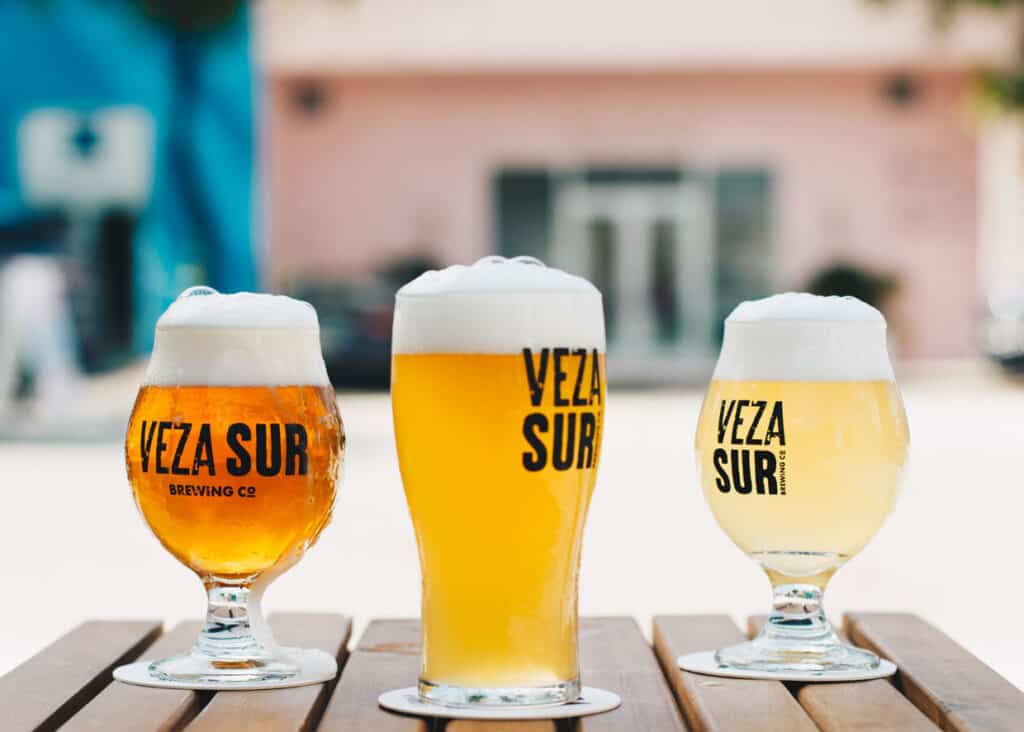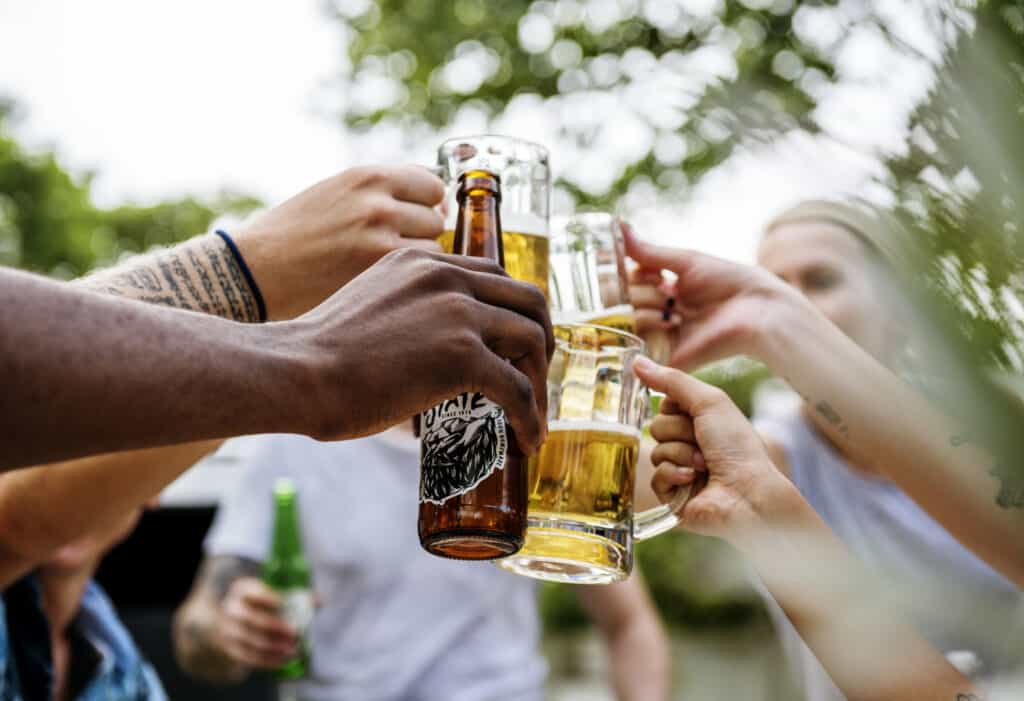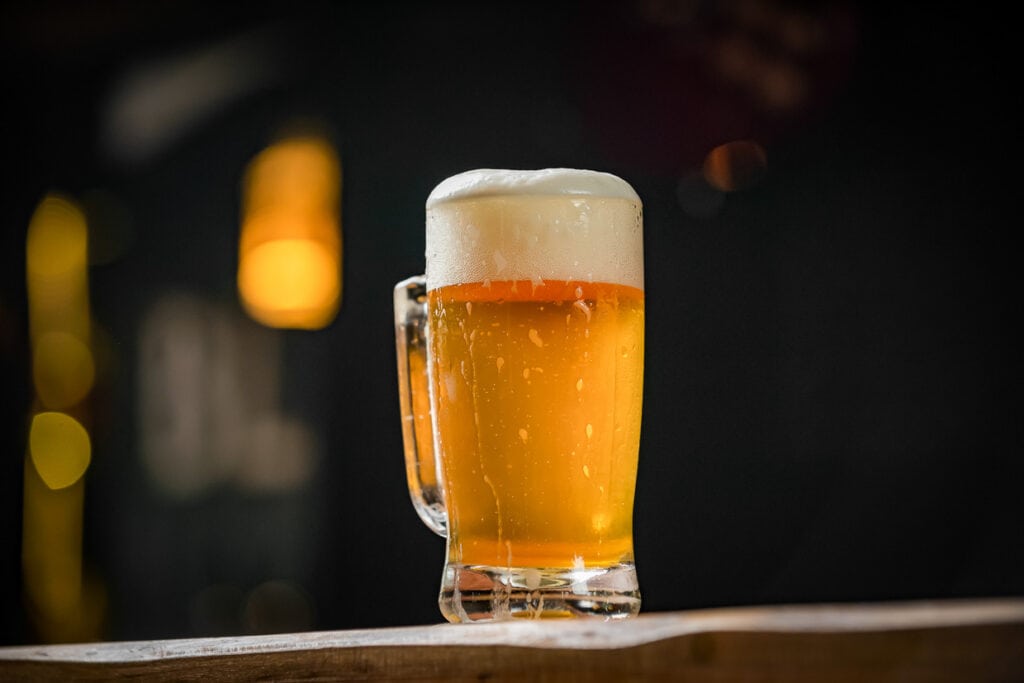With so many types of beer on tap, choosing your next brewski can seem like an impossible task. Branch out and try something new next time you pick up a six-pack or find yourself at a brewery or taproom.

When it comes to picking your next cold one, there are so many types of beer to choose from. Take it from me — it can feel overwhelming to decide, especially if you aren’t familiar with what’s on tap.
Do you want a blonde ale or a brown ale? A sour or a stout? A pilsner or a porter? Or what about a non-alcoholic beer?
Once you learn to identify some of the different types of beer, you can answer these questions. You’ll be taking the first step toward being a cicerone, which is the beer equivalent of the sommelier for wine.
“I will always order a local stout, but they can be so filling. On a warm day, I’ll be sipping a Belgian wheat ale. I’ll also usually order a flight if they offer it, often discovering something new I really like.”
— Kelly Stilwell, Food Fun & Faraway Places
Two styles of beer
At its simplest, beer is fermented alcohol produced from water, malted barley, hops and yeast, but the recipes — and thus the end results — can vary widely.
In fact, according to Homebrew Academy, there are more than 100 types of beer in the world. Most of them fall into two types: lagers and ales.
The main difference is in the yeast used in fermentation. Lagers are made with one strain of yeast, called lager yeast, while ales are made with ale yeast.
“I love a good hoppy IPA. The sour tang is my absolute favorite flavor in a beer. It took me going to a beer tasting to nail down the differences in taste.”
— Laura Sampson, Downsizing Dinner

Types of lagers
Lagers typically have a cleaner taste than ales thanks to their colder fermentation temperatures, allowing the malt and hops flavors to stand out. Here are some of the most common styles of lager to try next:
- Pilsners: From the Czech Republic, these crisp, clean-tasting beers have a floral aroma and a balanced bitterness derived from noble hops, a variety of European hops.
- Wheat beer: Wheat beers are typically brewed with a significant portion of wheat alongside barley and feature fruity and spicy notes from the yeast, such as banana and clove. They are also sometimes called by their German name, “witbier.”
- Mexican lager: Crisp and refreshing, Mexican lagers feature a light malt sweetness and a clean finish, which goes well with warm weather and spicy foods. These are delicious in the Corona sunrise, which is like a beer-based tequila sunrise cocktail.
- Bocks: Bocks are strong German lagers with a rich maltiness and subtle sweetness, often featuring toasted and caramel flavors.
- Oktoberfest: Also called “Märzen” beers, these smooth, rich, malty beers have notes of bread crust and toffee and a moderate bitterness from hops. They are traditionally enjoyed during the fall festival season in Germany. It’s excellent in beer cheese dip.
Types of ales
Ales differ from lagers because they are fermented at warmer temperatures. Ales often boast fruity and spicy notes that complement malt and hops flavors. These are some of the most common styles of ale:
- Brown ales: With a nutty, caramel and lightly chocolate flavor, brown ales are balanced by a mild bitterness from hops. These are smooth and flavorful beers with a medium body.
- Amber ales: Amber ales feature a balanced malt profile of caramel and toasty flavors, with moderate hop bitterness, creating a rich and satisfying medium-bodied beer.
- Blonde ale: Blonde ales are crisp, light and easy sippers. They have a clean finish that makes them refreshing and approachable. These are perfect for new beer drinkers.
- Pale ales: With a golden to amber color, pale ales are brewed with pale malt and ale yeast and are known for being light and hoppy with a touch of bitterness. American pale ales and India pale ales, or IPAs, are two popular types of pale ale.
- Hefeweizen: These lighter German beers have a pale and cloudy color because they are unfiltered. Hefeweizens have distinct citrusy notes and an effervescent texture.
- Stouts: Dark, rich and velvety, stouts are robust beers with the taste of roasted malt, coffee and chocolate. Since they have a light sweetness, stouts can work really well in cocktails and desserts like the black velvet.
- Sours: Sour beers are true to their name: tart and acidic. They are made with various fermentation techniques with wild yeast or bacteria, resulting in funky, fruity undertones.
- Porters: With a dark and roasted malt character, porters are smooth, full-bodied beers with notes of coffee and chocolate and have a moderate hop bitterness.
“I love beers on the opposite ends of the spectrum and find that what I drink really depends on the weather. On hot, sunny summer days, I love a sour, fruity beer. On cold rainy days, I prefer a dark chocolate milk stout.”
— Renee N Gardner, Renee Nicole’s Kitchen

How to taste beer
There are beers for every occasion and weather. The only way to know what you like is to try a lot of them. A great way to sample the difference is to go to a beer tasting or to order a flight of beer at a taproom or craft brewery. A spectrum of small sips lets you taste them back-to-back to identify the flavor profiles.
The best way to taste a few beers in a row is to begin with the lightest, mildest beer. End on the boldest, most flavorful beer to finish off the flight.
Next time you find yourself at a brewery, try a new-to-you type of brewski. Already an expert in types of beer? Try your hand at home brewing beer next.
Based in Charlotte, N.C., Susannah Brinkley Henry is the cocktail content creator behind the blog Feast + West. Her work has been featured in Southern Living, Oprah Daily, Buzzfeed, and more. In 2019, her website was a finalist in the Saveur Blog Awards for Best Entertaining Blog. As a professional graphic designer, photographer, writer and recipe developer, Susannah helps home bartenders and drink enthusiasts level up their cocktail skills.